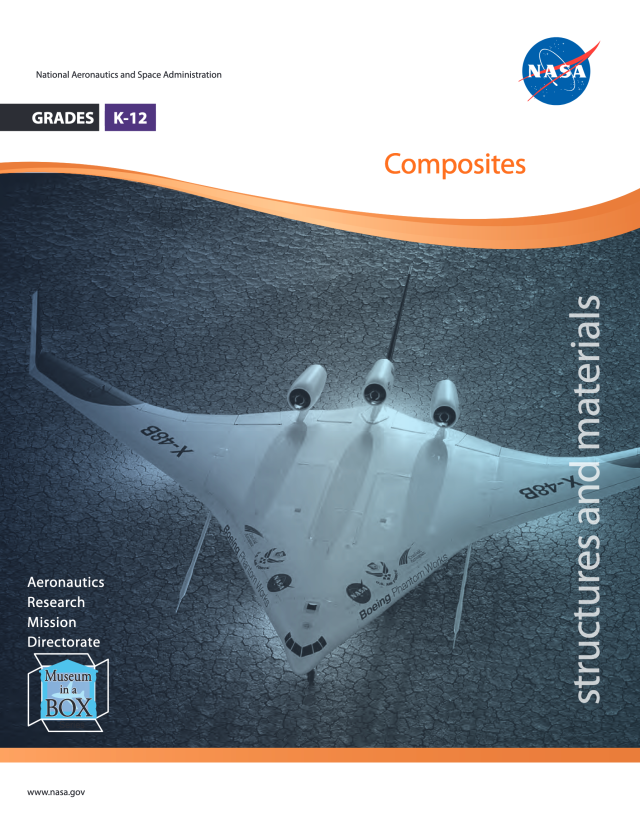
Audience
Educators
Grade Levels
Grades K-4, Grades 5-8, Grades 9-12
Subject
Physical Science, Energy, Flight and Aeronautics, Forces and Motion, Matter and Its Properties
Type
Lesson Plans / Activities
STRUCTURES AND MATERIALS
Composites
In the Composites lesson students examine several samples of carbon fiber materials. They measure at least one sample and determine the volume. The sample’s mass is determined and the density is calculated. The same procedure is followed for a spruce sample. Students are shown the sample of Nitinol that is in the shape of the word “ICE”. Nitinol is an alloy of nickel and titanium that has a very unusual property. The sample is then deformed by gently stretching it so that the word “ICE” is no longer discernable. The sample is then immersed into warm water and the original shape returns. Six cubes of different metals are compared for their density. Each cube is weighed and the volume is determined by measuring the dimensions. The density of each cube is calculated and compared. Aluminum, a common metal used in aircraft construction, is one of the samples. An object will float if the volume of fluid displaced is heavier than the object. In the “Density Paradox” activity, the weight of the displaced fluid is close to the weight of the object.
Grade Level: K-12
Time Required: 90 minutes
National Science Standards Addressed:
Science K-4:
- Abilities necessary to do scientific inquiry
- Understanding about scientific inquiry
- Properties of objects and materials
- Position and motion of objects
- Abilities of technological design
- Understanding about science and technology
Science 5-8:
- Abilities necessary to do scientific inquiry
- Understanding about scientific inquiry
- Motions and forces
- Transfer of energy
- Abilities of technological design
- Understanding about science and technology
Science 9-12:
- Abilities necessary to do scientific inquiry
- Understanding about scientific inquiry
- Motions and forces
- Interactions of energy and matter
- Abilities of technological design
- Understanding about science and technology
Topic: Structures and Materials, Density






















